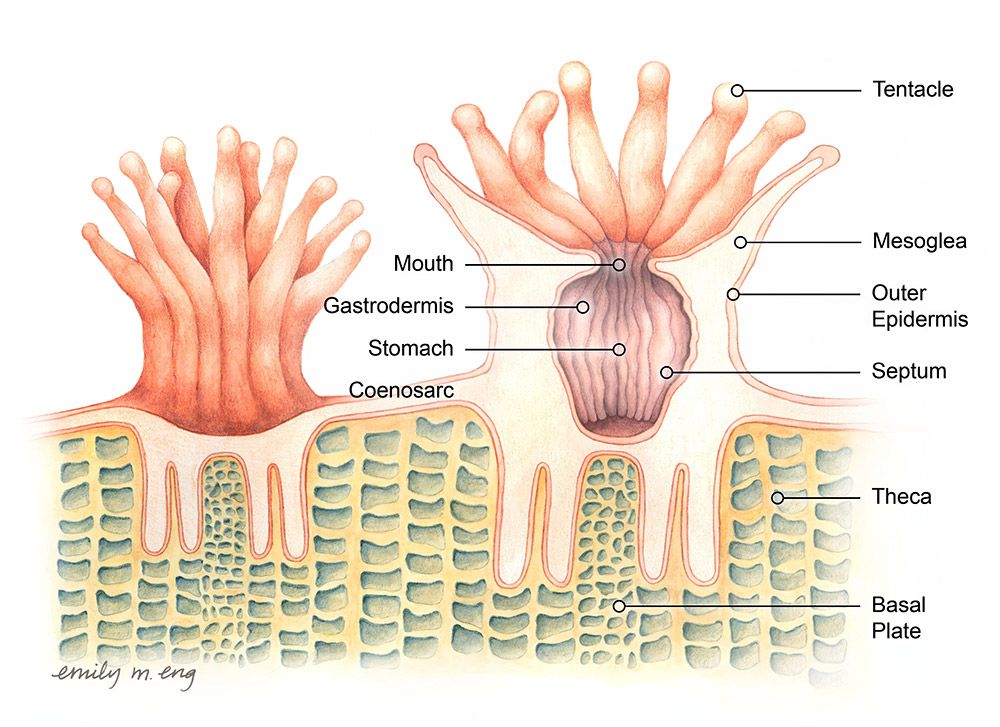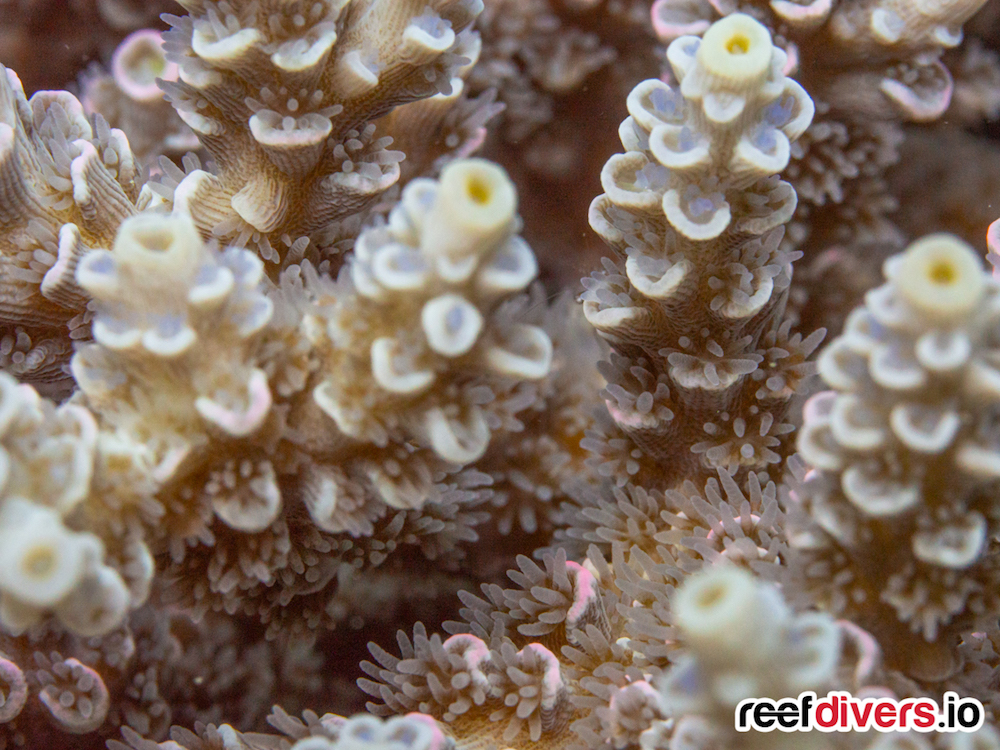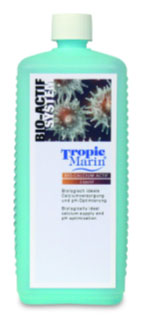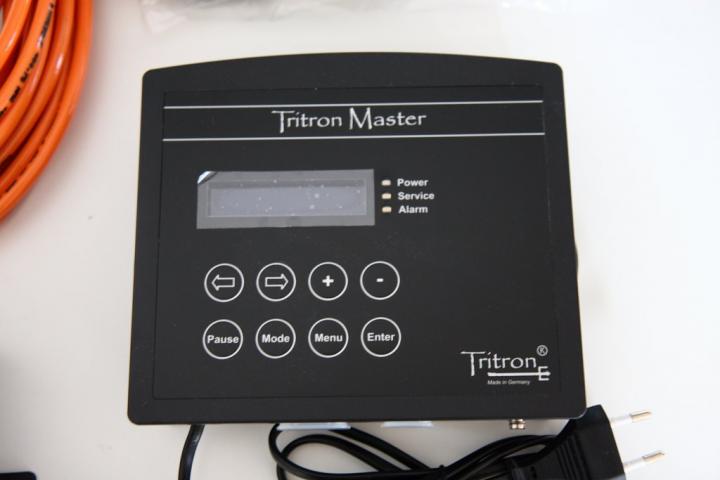Corallite
Looking through my pictures I realized I am started to get quite the collection of macro shots of Acropora corals. One thing that is really incredible about these close up images is we are able to see the corallite, and the tiny polyp living inside.
No genus of corals emphasizes the diversity of corallites quite like Acropora, and I thought to myself, surely some people will be asking, so what is a corallite anyways?
Corallite is the first term which is important to understanding coral biology, and later coral identification. In the simplest form, the corallite is the polyps home, a place the polyp can retract inside and be safe from predators.
See corals are made up of tiny animals called polyps, and polyp they are pretty much just little sea anemones. And on the reef all by themselves, they would be very vulnerable to predators which like to munch on their soft jelly bodies.
Coral polyps have the ability to extract minerals such as calcium carbonate from the water column which they deposit around their bodies as a hard skeleton. This skeleton is their protection and each polyp builds up enough skeleton that it can safely retract inside should it feel threatened.
The little area the polyp builds is called the corallite, and over time the corallites grow bigger and bigger. As new polyps are formed they also start to building corallites and before you know it these corallites multiple, and this is how the coral reef is made.
Axial and Radial Corallites
We can’t talk about corallites and Acropora corals without mentioning the most important corallite of them all.
Acropora corals have two types of corallites, an Axial corallite, and a Radial corallite. The Axial corallite is very special and unique to Acropora . It is located on the tip of the Acropora branch and is larger than all the other corallites.
This Axial corallite gives the branch a hole in the tip of each branch and the word Acro translates from Latin as tip or end and Pora means hole, so the word Acropora translated from Latin means a hole in the tip of the branch.
The Radial corallites are the ones on the side of the branches, and these corallites can have several different shapes. They can be long tubes or short little cups. They can be facing up or facing out, they can be little holes on the surface of the coral, or they could have a tiny little lip just big enough to see.
Telling the difference between corallite shapes is what tells apart the different species. So, now that you know what a corallite is you are on your way to becoming a master coral spotter! All the pictures in this article are of Acropora corals showing different corallite forms.






